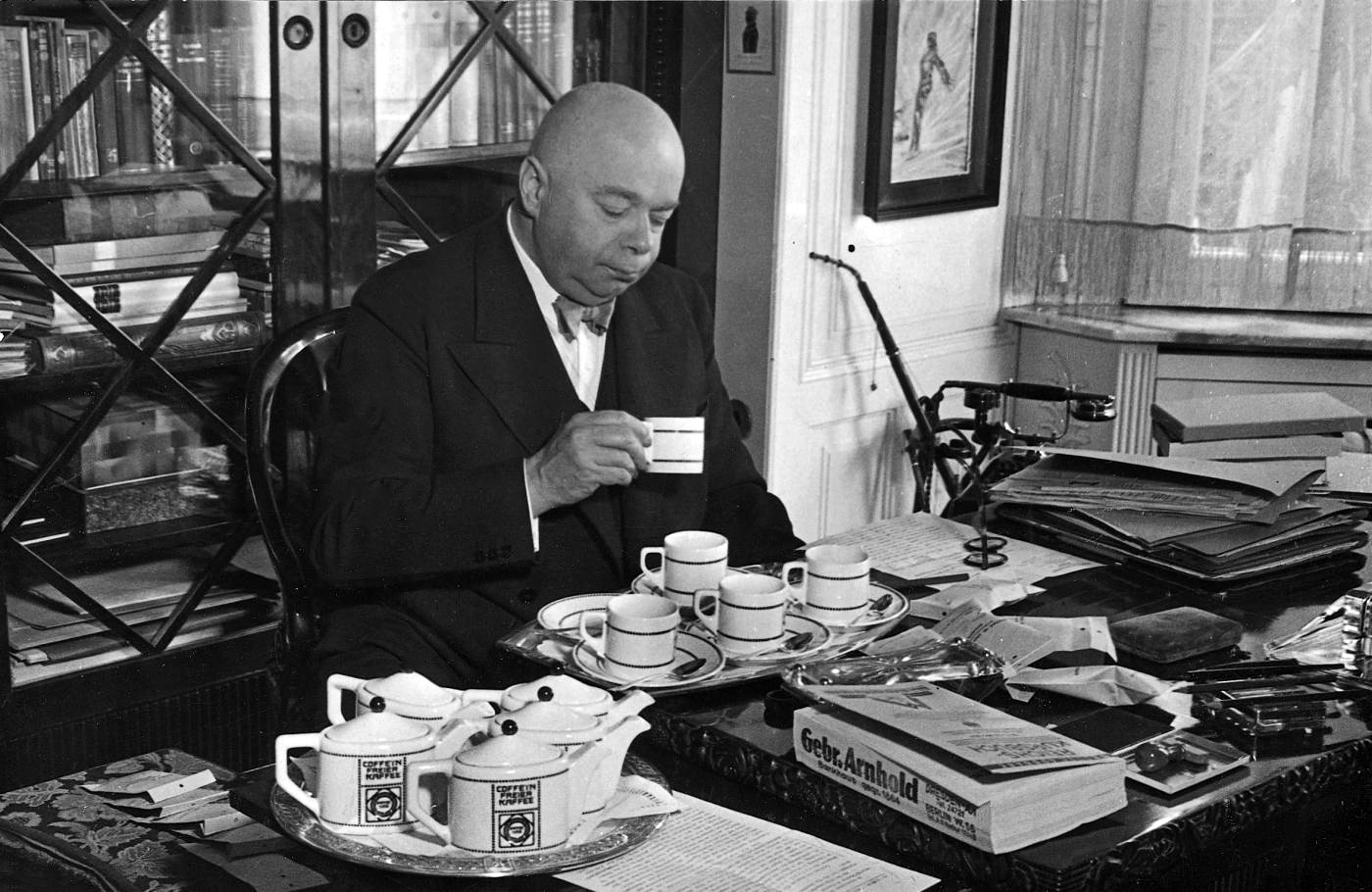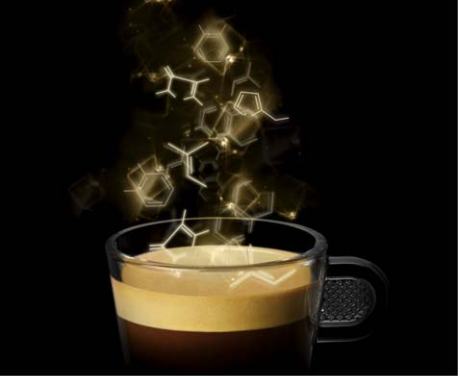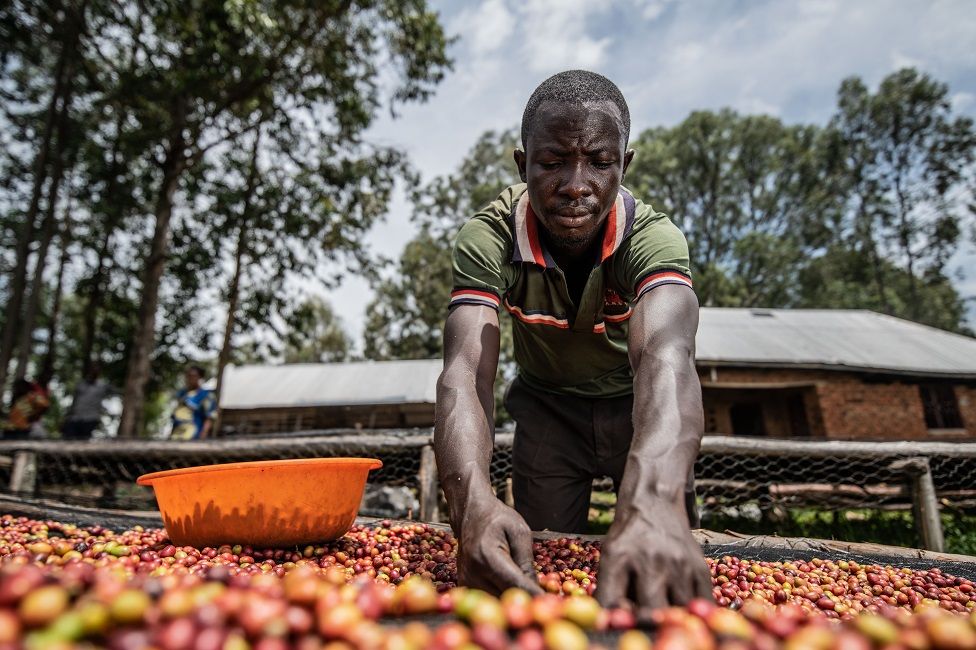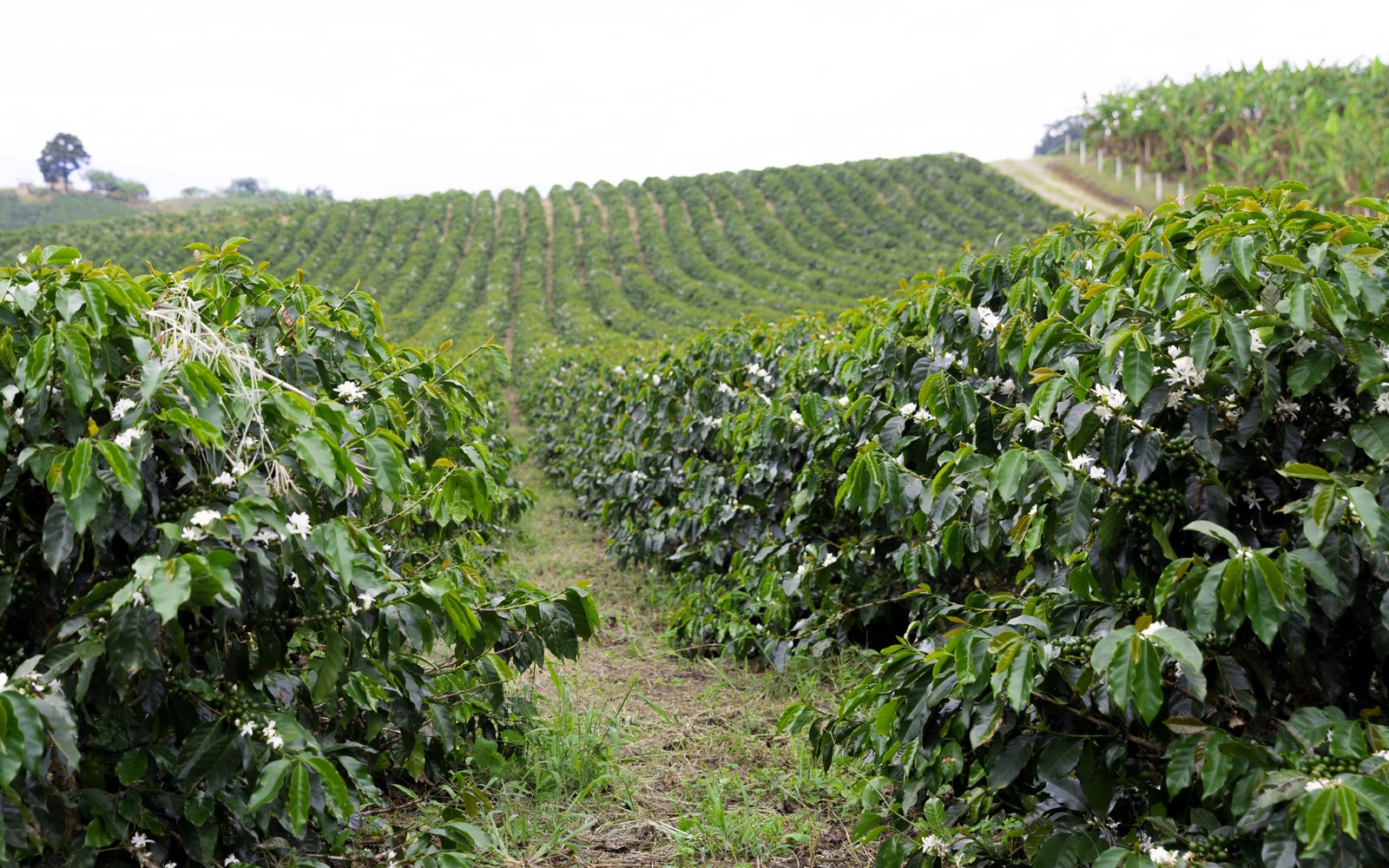How long after roasting coffee can you drink it?
VCA - Coffee made right after roasting can produce a poor flavor
-
What's degas?
During the roasting process, coffee beans undergo major changes in their chemical composition, and gas is formed through maillard reactions and caramelization, strecker reactions, and thermolysis. The volume of the seed can be increased by up to 80% and the weight reduced by 20% for roasted coffee (Clarke et al, 2001). At the end of the roasting process, some of the gas remains retained inside the foam holes of the coffee bean and gradually escapes during preservation or suddenly during grinding and extraction. (Schenker, 2000).
Clarke et al. (1987) that the composition of the exhaust gas from coffee beans during grinding was 87% CO2, 7.3% CO, 5.3% N2, and the remaining less than 1% were volatile organic compounds (VOC). Although the gas composition may depend on the grinding configuration, level and other parameters, no such detail is available at the moment. Since CO2 has so far been the most common component of exhaust gas, to put it simply, the total amount of CO2 that is released from coffee is roughly calculated by CO2.
Degas is the release of gas from roasted coffee, a lot of this gas is released in the first few days after roasting, in the preparation of the exhaust gas will form small bubbles, these gas will limit the contact between the substances in the coffee bean and the water leading to the uneven aroma as well as flavor in coffee.
The release of CO2 at different stages from roasting to consumption is associated with many important properties and characteristics of coffee. It is an indicator of freshness, plays an important role in durability and packaging, affects the extraction process, participates in the crema formation process and can affect the sensory configuration in coffee cups (Samo Smrke et al, 2017)
-
What about the carbon dioxide in coffee?
Although CO2 is one of the smallest molecules in coffee, there are many roles in the properties and characteristics of coffee from the roasting process to the coffee cup (Schenker, 2000; Wang et al, 2014)
-
Accounts for 1-2% of the newly roasted coffee.
-
CO2 will be released to create a protective environment in the packaging.
-
The amount of CO2 retained inside the spherical structure of the coffee bean is an indicator of its freshness (Gloss et al, 2014; Illy et al, 2005).
-
During the extraction process, part of the CO2 is released directly and can form a ‘crema’ layer (Illy et al, 2011; Folmer, 2016).
-
In conditions of high alkalinity of water (>100 ppm), many of the acids extracted from coffee are neutralized by hydrocarbonate, thus producing a quantity of CO2 depending on pressure and temperature. The generation of CO2 in the extraction process creates an additional impediment and thus prolongs extraction time (Fond, 1995; Rivetti et al, 2001).
In studies of the total gas or CO2 and the de-gas rate from whole roasted coffee and ground coffee were measured using three different methods of analysis:
-
The increase in pressure is measured in a closed container during the preservation of rotting particles and is related to the amount of exhaust gas (Baggenstoss et al, 2007; Koziorowski et al, 2008).
-
Quantitative extraction and retention on the measurement column allow the determination of CO2 remaining in roasted coffee. This method is intended to measure total CO2. It can estimate the amount of CO2 released from the particle, and the amount that CO2 can be released during the extraction process (Shimoni et al, 2000; Anderson et al, 2003).
-
CO2 release from roasted coffee and coffee mills is measured by monitoring increasing CO2 concentrations in closed containers with large space capacity, using an infrared absorption spectrum (Wang et al, 2014).
The results on exhaust gas for the de-gas rate of whole grain roasted coffee are as follows:
-
From the lowest level of 0.7-4.3 mg/g, the time was not recorded (Shimoni et al, 2000)
-
From 9-10 mg/g for 60 days (Geiger et al, 2005)
-
From 6.5-14 mg/g for 30 days using IR and up to 16 mg/G of total CO2 retained after roasting (Wang et al, 2014)
Differences in values may be due to differences in roasting configuration, methods and de-gasing times used by different studies, as well as processed coffee types, varieties and origins. In addition, it has been found that post-roasting cooling (air cooling versus water spraying) has an impact on the degassing process of whole-grain roasted coffee (Baggenstoss et al, 2007).
Geiger et al. (2005) that coffee beans roasted at the same level of mass deficit when roasting at two different speeds obtained different amounts of CO2 formed during roasting, and the amount of CO2 released during preservation, also varied.
The total amount of gas retained in the roasted coffee bean depends only on the level of roasting, not the speed of measuring the remaining CO2 content. However, the rate of dehumidification after roasting depends heavily on the rate and degree of roasting (Wang et al, 2014; Shimoni et al, 2000).
-
How long does it take for coffee to disinfect?
3.1. The exhaust with coffee-roasted whole grains
Experimental measurements of C.arabica grains from El Salvador roasted on a Probatino machine at three roast levels: light, medium, and dark at three different roast rates: fast, medium and slow, resulting in nine different roasting profiles, with the degassing process measured for at least 400 hours resulting as shown below:
Degassing configuration of whole (Arabica) coffee beans, roasted at three different roasting levels (hard, medium and thick) at a fixed roasting rate (a) and at three distinct roasting rates (fast, medium, and slow) at the same roasting level (b).
-
For light roasting, the volume decreases by 2.7 mg/g (slow), 2.5 mg/g (medium) and 2.8 mg/g (fast).
-
For the medium grinding level, the corresponding weight reduction is 4.7 mg/g (slow), 5.6 mg/g (medium) and 6.6 mg/g (fast).
-
For the dark roast, the mass reduction is 8.5mg/g (slow), 10.0 mg/g (medium) and 11.9 mg/g (fast).
The weight loss and degassing rate of the sample roasted at the average speed of the light roasting level were measured over more than 800 hours; after 800 hours, the total reduction of 3.4 mg/g due to the degassing process was observed. This suggests that light-roasted whole coffee beans are still dehydrated after a month of roasting. For medium to dark roasting, fast roasting degenerates faster than slow roasting (Wang et al, 2014). The dehumidification of light-roasted coffee is less affected by the speed of roasting.
The higher values obtained from the measurement of total CO2 using the column extraction and retention method (the wet method) show that part of the CO2 inside the particle is not released in dry conditions (Wang et al, 2014; Hinman, 1993), it is only released when coffee is extracted with water. This may explain the observation that even old coffee, when extracted as espresso coffee, may still show some remaining layers of crema.
3.2. The exhaust for roasted and ground coffee
After grinding, the dehumidification rate increases a lot. The amount of CO2 lost in the first few minutes after grinding was to be between 40-50% (Radtke, 1975) and 59-73% (Shimoni and colleagues, 2000). By measuring the remaining CO2 content, the gas leakage in the grinding process is 26-30% (rough), 33-38% (moderate) and 45-59% (fine) (Wang et al, 2014). With infrared spectroscopy (IR) measurements, the CO2 loss was at 0-14% (rough), 0-28% (medium) and 40-65% (fine). As presented, a significant amount of CO2 has been lost during the grinding process, and the smoother the grilling, the more CO2 is released.
For roast and ground coffee measurements, green Arabica seeds from Guatemala and robusta (Coffea canephora) from Vietnam were roasted on a Probat roaster. The dehumidification time for roasted coffee is shorter than for whole coffee, and the exhaust is also smaller. Compared to the degassing from whole grains, up to 75% of the gas retained is released during and immediately after grinding (within 90 seconds, until the first measurement), for fresh roasted coffee.
Data on the dehydration process from two varieties of coffee that are roasted at different degrees are presented in the figure below. The differences in the degassing process between Arabica (Figure A, up to 3.0 mg/g) and Robusta ( Figure B, to 3.9 mg/ g) were similar to the results (Anderson et al, 2003).
Dehumidification profile of fresh roasted and ground coffee beans of Arabica (a) and Robusta (b) samples, roasted on a 100 g roaster.
The roasting configuration is as follows: for arabica, 0−5 minutes at high flow, from 5 minutes at low flow; for robusta, 0−6 minutes at higher flow, and from 6 minutes at lower flow. The total roasting time is about 7–8 minutes (average roasting speed).
The degas degradation of arabica coffee, measured by weight, is lower than the amount of CO2 leftover after grinding in the range of 4.5 to 8.5 mg/g for fine grinding and by IR is about 5 mg/g (Wang et al, 2014; Anderson et al, 2003).
-
Conclusion
The above studies show that the amount of CO2 retained in roasted coffee beans at any roasting level does not depend on roasting temperature (230 and 250ºC). However, the CO2 degassing rate for high-temperature roasted coffee beans is significantly faster than that of lower-temperature roasting coffee. The degas duration can range from three days to a month (light), this is also a good time to make coffee but each different type of coffee with different roasting configurations will have different degas required.
Reference
Anderson, B. A.; Shimoni, E.; Liardon, R.; Labuza, T. P. The diffusion kinetics of carbon dioxide in fresh roasted and ground coffee. J. Food Eng. 2003, 59, 71−78.
Baggenstoss, J.; Poisson, L.; Luethi, R.; Perren, R.; Escher, F. Influence of water quench cooling on degassing and aroma stability of roasted coffee. J. Agric. Food Chem. 2007, 55, 6685−91.
Clarke, R. J.; Macrae, R. Coffee, Vol. 2: Technology; Elsevier Applied Science Publishers, 1987.
Clarke, R. J.; Vitzthum, O. G. Coffee: Recent Developments; Blackwell Sciences Ltd., 2001.
Effect of water composition and water treatment on espresso coffee percolation. In: Pro-ceedings of the 19th ASIC Colloquium; Trieste, Italy.
Folmer, B. The Craft and Science of Coffee; Elsevier Science, 2016.
Fond, O, 1995. Effect of water and coffee acidity on extraction: dynamics of coffee bed compaction in espresso type extraction. In: Proceedings of the 16th Colloquium. ASIC, Kyoto
Geiger, R.; Perren, R.; Kuenzli, R.; Escher, F. Carbon Dioxide Evolution and Moisture Evaporation During Roasting of Coffee Beans. J. Food Sci. 2005, 70, E124−E130.
Hinman, D. CO2 Sorption in roast and ground coffee. In 15th International Scientific Colloquium on Coffee, Montpellier, France, 1993.
Illy, A.; Viani, R. Espresso Coffee: The Science of Quality; Elsevier: Amsterdam, The Netherlands, 2005; Vol. 2.
Illy, E.; Navarini, L. Neglected Food Bubbles: The Espresso Coffee Foam. Food Biophysics 2011, 6, 335−348.
Koziorowski, T.; Baumeister, H.; Jansen, G.; Bongers, S. Development of an apparatus for measuring the degassing behavior of coffee with the option to examine the influence of protective gases for aroma preservation. In ASIC: 22nd International Conference on Coffee Science; Campinas, Brazil, 2008.
Radtke, R. Das Problem der CO2-Desorption von Rostkaffee unter dem Gesichtspunkt einer neuen Packstoffentwicklung. In 7th International Scientific Colloquium on Coffee, Hamburg, Germany, Association Scientifique Internationale pour le Cafe: Paris, France, 1975.
Rivetti, D., Navarini, L., Cappuccio, R., Abatangelo, A., Petracco, M., Suggi-Liverani, F., 2001.
Schenker, S. Investigations on the hot air roasting of coffee beans. Thesis/Dissertation No. 13620, ETH Zurich, Switzerland, 2000.
Schenker, S.; Perren, R.; Escher, F.; Handschin, S.; Frey, B. Pore Structure of Coffee Beans Affected by Roasting Conditions. J. Food Sci. 2000, 65, 452−457.
Shimoni, E.; Labuza, T. P. Degassing kinetics and sorption equilibrium of carbon dioxide in fresh roasted and ground coffee. J. Food Process Eng. 2000, 23, 419−436.
Wang, X.; Lim, L.-T. Effect of roasting conditions on carbon dioxide degassing behavior in coffee. Food Res. Int. 2014, 61, 144−151. (6) Gloss, A. N.; Schonbachler, B.; Rast, M.; Deuber, L.; Yeretzian, C. Freshness Indices of Roasted Coffee: Monitoring the Loss of Freshness for Single Serve Capsules and Roasted Whole Beans in Different Packaging. Chimia 2014, 68, 179−182.






